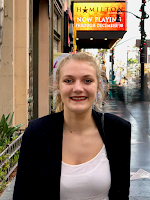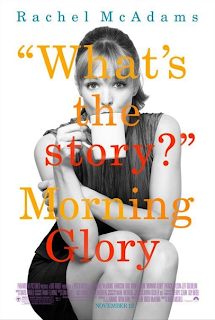Bridging Generations at Work with Pop Culture—and a Movie Lunch
There's a moment in every professional's life when they drop a perfectly timed pop culture reference into a meeting… and it lands with a thud. Blank stares. Polite smiles. Someone typing under the table (probably Googling what you just said). That moment happened to me for what felt like the hundredth time when I made a crack about a TPS report and "channeling my inner Lumbergh." Crickets. That's when I realized: my pop culture isn't their pop culture.
Like many professionals of my generation, I've carried certain cultural touchstones with me throughout my career. One of my most well-worn references has long been the 1999 cult classic Office Space. It's a workplace satire so spot-on, it feels like a documentary. Over the years, I've sprinkled quotes from it into emails, used it to lighten the mood in tense meetings, and joked about red staplers and smashing a temperamental printer à la the movie's infamous slo-mo baseball bat scene.But my team, filled with bright, capable, mostly Millennial and Gen Z colleagues, often didn't follow. To them, Office Space is a vaguely familiar title, a meme source at best, not the formative workplace gospel it was for Gen X and older Millennials. They didn't know about flair. They'd never met Milton. They certainly didn't grasp the life-affirming joy of a good case of "not gonna work here anymore."
After yet another one of my Office Space references fell flat, one of my managers offered a helpful and slightly daring suggestion: why not turn one of our monthly team meetings into a lunch gathering and screen the movie? I decided it was time. We scheduled a (long) lunch hour, invited everyone to brown bag it, and turned our conference room into a makeshift movie theater. No slides, no updates, no agendas, just some popcorn, shared laughs, and 90 minutes of pure late-'90s corporate catharsis. It was a simple shift, but it created space for something we didn't know we needed: a communal pause, a cultural reset, and a little bit of fun in the middle of a workday.
And something unexpected happened.
They loved it. They laughed. They exchanged "ohhhh, now I get it" glances during scenes they'd heard me reference countless times. More importantly, it became a shared experience. We started speaking the same language, not just mine, not just theirs, but something in between. It broke down barriers. Suddenly, jokes landed. Google Chat channels lit up with GIFs of Lumbergh and his coffee mug. We even started referring to standard daily and weekly reports as "TPS" reports.
But beyond the inside jokes, it created a subtle but powerful shift. We found common ground in a place none of us expected: a 25-year-old movie about cubicle life. It sparked conversations about how workplaces have changed (and how much they haven't), what autonomy and burnout look like across generations, and how humor can be a survival tool in any era of work.
I don't expect Office Space to become a required part of onboarding. And I still make a conscious effort to engage with the pop culture that resonates with my team today (yes, I know who Olivia Rodrigo is, and no, I don't fully get TikTok). But sharing that piece of my own cultural foundation helped me show up as a more human version of "the boss." And it helped my team see me as more than just the person who schedules meetings and signs off on budgets.
A few weeks later, I decided to leave my job and try something new. But I'm glad we had that lunch. Watching everyone crack up over terrible movie quotes and argue about whether the special effects were actually good reminded me of why I liked working with these people in the first place.
If you catch yourself making some reference you think everyone will get, maybe don't assume they will. Ask if they've seen it. Better yet, watch it together sometime. You might be surprised by what you learn about each other. You might just find that a little bit of nostalgia served with popcorn can go a long way in building trust, camaraderie, and even a few inside jokes that live on long after you've moved on.
And if they still don't get it?
Well, at least you tried. And that would be grreeeeat.
Review
directed by Mike Judge
My rating 4½ of 5 stars
In the grand pantheon of movies about work, Office Space exists in a perfect little cubicle of its own, where fluorescent lights hum, printers jam for sport, and the scent of burnt coffee hovers permanently in the breakroom. Directed by Mike Judge (yes, the Beavis and Butt-Head guy, but stay with me), this 1999 sleeper hit manages to turn the beige banality of office life into something surreal, absurd, and ultimately cathartic. The premise is simple: a burned-out programmer starts ignoring all the rules and somehow gets promoted for it. But beneath that surface-level rebellion lies a sharp, weirdly comforting look at how modern work quietly gnaws away at the soul.
Ron Livingston plays Peter Gibbons, a man so beaten down by memos, traffic, and middle management that even his therapist gives up on him (okay, technically it’s a hypnotherapist who dies mid-session, but you get the idea). I’ve liked Livingston before he ever showed up in HBO’s Band of Brothers as Captain Lewis Nixon, a performance layered with understated depth and a heavy pour of scotch. He played Nixon like a guy who’s seen too much and says too little, which, now that I think of it, isn’t a bad description of Peter Gibbons either. In Office Space, Livingston’s dry delivery and quiet exasperation make him the perfect everyman for a world where showing up five minutes late can trigger a full-scale HR intervention. He’s not flashy, and that’s exactly why he works both as a character and as a stand-in for all of us who’ve ever contemplated setting our inboxes on fire.
But the real evil in this movie isn't any person - it's the TPS report. You know, the one with the cover sheet that everyone keeps forgetting, and then eight different managers have to send you emails about it. The absurdity of this detail struck a familiar chord with me and probably will for anyone who’s spent time navigating a sea of weekly status updates, productivity dashboards, or systems that require a password change every 11 days. I once wrote about my nostalgia for green-bar paper and fixed-pitch fonts on this very blog (here, for the curious). Those old green-bar computer printouts were ugly as hell, but at least they were honest about it. Now we spend half our time making reports look pretty instead of making sure they actually say something useful. Office Space nailed that - it's not just that there's too much paperwork, it's that none of it has anything to do with getting actual work done. And when Peter decides to opt out, it feels, for a brief, glorious moment, like he’s achieved workplace nirvana.
Of course, no discussion of Office Space would be complete without Milton the stapler-obsessed, softly mumbling tragic hero played to perfection by Stephen Root. Or the Bobs, those interchangeable consultants with MBA smugness and bad intentions. Or the printer, whose ultimate fate remains one of the most satisfying acts of vigilante justice ever captured on film. Judge populates this universe with characters so exaggerated they shouldn’t feel real, but somehow do. Maybe because we’ve met them. Perhaps because we’ve been them.
Office Space bombed when it first came out, but then everybody started watching it on DVD and quoting it at work. Now you can't say the word 'flair' without someone doing that whole Jennifer Aniston voice thing. The movie came out twenty-five years ago, but I swear I've worked at that exact office. Different company names, but the same awkward meetings and bizarre office traditions that somehow make perfect sense at the time. Corporate culture has evolved (sort of), but the core truth remains: people want their work to mean something, or at the very least, not to actively erode their will to live.
In short, if you’ve ever wanted to do a slow-motion beatdown of a malfunctioning printer in a field while Still by Geto Boys plays in the background, this one’s for you.







